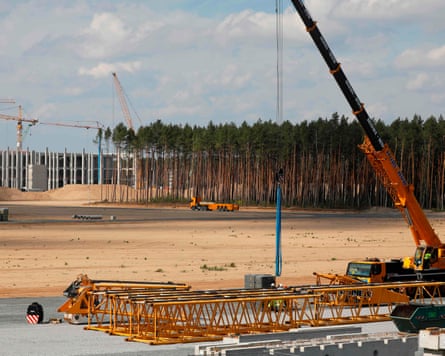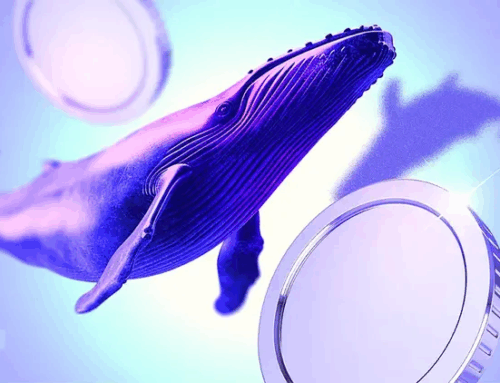Revealed: Europe losing 600 football pitches of nature and crop land a day
September 30, 2025
Europe is losing green space that once harboured wildlife, captured carbon and supplied food at the rate of 600 football pitches a day, an investigation by the Guardian and partners has revealed.
Analysis of satellite imagery across the UK and mainland Europe over a five-year period shows the speed and scale with which green land is turning grey, consumed by tarmac for roads, bricks and mortar for luxury golf courses and housing developments.
The loss of the Amazon rainforest has been measured for years using satellite imagery and on-the-ground monitoring, but until now the scale of green land lost in Europe had never been captured in the same way.
In the first investigation of its kind across Europe, the Green to Grey project, working with scientists from the Norwegian Institute for Nature Research (Nina) to measure nature loss, reveals the scale of nature and farmland engulfed by human interventions.
The cross-border project by the Guardian, Arena for Journalism in Europe (Arena), Nina, the Norwegian broadcaster NRK and other news outlets in 11 countries found that Europe loses about 1,500 sq km (580 sq miles) a year to construction. About 9,000 sq km of land – an area the size of Cyprus – was turned green to grey between 2018 and 2023, according to the data. That is the equivalent of almost 30 sq km a week, or 600 football pitches a day.
Nature accounts for the majority of the losses, at about 900 sq km a year, but the research shows we are also building on agricultural land at a rate of about 600 sq km a year, with grave consequences for the continent’s food security and health.
Steve Carver, a professor of wilderness at the University of Leeds, said: “Land lost to development is one of the primary drivers of wilderness loss and biodiversity decline. But we are also losing cropland and productive land as our cities expand into the green belt and on to agricultural land.”
The most common developments, accounting for a quarter of all cases, were for housing and roads. But nature and farmland is also being destroyed to accommodate luxuries for the rich, tourism, consumerism and industry.
Arena reveals that in Portugal, almost 300 hectares (740 acres) of the protected sand dunes at Galé Beach near Melides, an hour south of Lisbon, have been lost to create a new golf course at the CostaTerra Golf and Ocean Club, where properties will sell for about £5.6m
The resort, which is still under construction, is a second home to Princess Eugenie and her husband, Jack Brooksbank, who works for the development. It is being built on Natura 2000 land, which is supposed to be protected under EU regulations.
The resort promises “the simple luxury of European living” on “the last untouched Atlantic coast in southern Europe”. Its 75-hectare golf course is estimated to consume as much as 800,000 litres of water a day to maintain the greens.
Exceptions to development on Natura 2000 land can be granted if there is overriding public interest. The Portuguese authorities approved the resort, which is owned by the US property firm Discovery Land Company, on the grounds of economic benefit.
Ioannis Agapakis, a lawyer for ClientEarth, an environmental law NGO, said a golf course did not fulfil these requirements. “It is obviously not overriding public interest,” he said. “The mere fact that you find economic benefits or some type of economic development from a project does not make it overriding public interest.”
Discovery Land Company said in a statement: “We are developing CostaTerra to be a model for environmental stewardship and sustainability in the region.
“Every aspect of the property – from the design of the golf course, to rainwater and waste management practices, to the development and preservation of wildlife habitat and corridors – was designed to meet or exceed EU standards, including the Natura 2000 framework.
“We’ll continue to innovate and find solutions to make CostaTerra the most responsible property of its kind.”
Brooksbank was approached by the Guardian but did not comment.
In Turkey, the Çaltılıdere wetland in the İzmir province on the Aegean coast has been buried beneath more than a square kilometre of concrete foundations for a marina to repair and build luxury yachts, the investigation shows.
Officially designated as a wetland by Turkey, Çaltılıdere was home to flamingos, pelicans, cormorants, sea bream and sea bass. It also served as a vital carbon store and natural flood defence.
But local authorities overturned its protected status in 2017 after a tense and controversial local commission meeting. Satellite images show how the vital stopping point for migratory birds has been consumed by concrete foundations.
Yatek, the industry cooperative developing the marina project, says it will bring huge economic growth and thousands of jobs to the area. “The richest people in Turkey and in the world will bring their big yachts here and repair them or have them built,” Yatek’s former director said in an interview in 2021. The cooperative foresees manufacturing as many as 132 luxury yachts a year.
Yatek said in a statement that its project was “a fully compliant initiative that strictly follows all legal procedures, including the acquisition of the environmental impact assessment (EIA) report”, a document detailing a project’s effects for permission to be granted under EU law.
“The environmental impacts and other ecological aspects of the project have been thoroughly assessed by the competent authorities of our country, which have granted a positive EIA decision. Accordingly, the entire project process continues lawfully and in line with the relevant legislation,” the statement said.
Turkey, the largest country in the analysis, ranked highest for the amount of green land lost between 2018 and 2023. It built on 1,860 sq km of nature and crop land, accounting for more than a fifth of the total loss in Europe.
But the developments are across Europe. In the Vermio mountains in northern Greece, defined as a roadless area of wilderness in Greek law, a large windfarm is being developed across the western and central Macedonia regions.
According to the Dublin-based Aer Soléir, the ultimate owner of the Vermio windfarms, the plans are fully aligned with applicable Greek and EU regulatory frameworks. It said the development had “secured, during a lengthy demanding design and licensing process, all required permits and approvals”, and added: “The project was reviewed twice by the supreme administrative court. In both cases, the relevant annulment actions were rejected, and the court confirmed full compliance of the project with the environmental and regulatory framework.”
The company also said a series of reforestation works were being undertaken in parallel with construction.
In Germany, half a million trees were felled near Berlin to build a Tesla gigafactory after the government approved a plan to expand the plant to double production to 1m cars a year. Tesla has been approached for comment.
The methodology used in the Green to Grey investigation is different from the official method used by the European Environment Agency (EEA), which excludes areas smaller than 50,000 sq metres, the equivalent of about five football pitches. The investigation identified small, piecemeal nature losses as well as construction in urban green spaces, resulting in estimates 1.5 times larger than the EEA’s calculations and showing the total impact of cumulative small-scale losses.
“It’s a slow-burning issue,” said Jan-Erik Petersen of the EEA. “It just accumulates over time.”
The Green MEP Lena Schilling said: “For years, the EU has promised to lead on climate and nature protection, but what this investigation shows is that we are literally cementing over our own future.
“Every forest, fertile field and biodiversity hotspot destroyed for short-term profit is a betrayal of the promises we made to young people.”

She said that if nature continued to be treated as expendable, Europe would lose not only its climate goals, but also its food security, its health and the very places that made the continent worth living in.
The analysis covered 30 countries, covering 96% of the EEA’s 39-country area. Every country examined is losing natural and agricultural areas, but some fare worse than others. The five countries with the highest green losses were Turkey,with more than 1800 sq km of nature and crop land lost between 2018 and 2023, Poland (more than 1,000 sq km), France (950 sq km), Germany (720 sq km) and the UK (604 sq km).
Zander Venter of Nina is planning to scale up the project to establish a global vision of the impact humans have had on the planet. For anyone interested in helping, he will be launching a citizen science web app to try crowdsource the verifications.
Additional reporting by Rachel Keenan, Raphael Boyd, Olivia Lee, Yassin El-Moudden, Gracie Daw, Matthew Holmes, Mariam Amini, Gabriel Smith, Dominic Kendrick and Emma Russell
For more, visit greentogrey.eu
The next phase of this project will be planet-wide: join a crowdsourced citizen science initiative to measure global nature loss here
Search
RECENT PRESS RELEASES
Related Post




